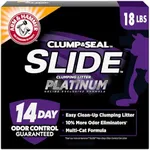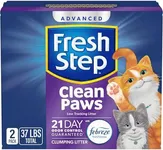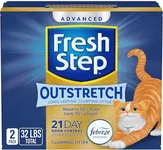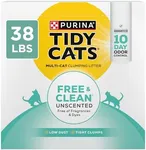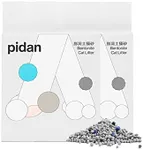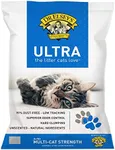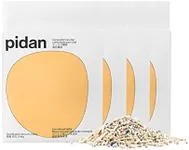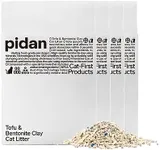Buying Guide for the Best Kitty Litters
Choosing the right kitty litter is essential for both your cat's comfort and your convenience. The right litter can help control odors, reduce mess, and make cleaning easier. When selecting kitty litter, consider your cat's preferences, any health concerns, and your own needs for maintenance and cleanliness. Here are some key specifications to consider when choosing the best kitty litter for you and your feline friend.MaterialKitty litter comes in various materials such as clay, silica gel, recycled paper, and natural/biodegradable options like corn, wheat, or pine. The material affects absorbency, odor control, and dust levels. Clay is highly absorbent and good at controlling odors but can be dusty. Silica gel is excellent for odor control and low dust but can be more expensive. Natural options are eco-friendly and often less dusty but may not control odors as well. Choose a material based on your cat's sensitivity to dust, your preference for eco-friendly products, and the level of odor control you need.
Clumping vs. Non-ClumpingClumping litters form solid clumps when they come into contact with moisture, making it easier to scoop out waste and keep the litter box clean. Non-clumping litters absorb moisture but do not form clumps, requiring more frequent complete changes of the litter. Clumping litters are generally more convenient for daily maintenance, while non-clumping litters may be better for cats with respiratory issues or those who prefer a different texture. Consider how often you want to clean the litter box and your cat's preferences when choosing between clumping and non-clumping.
Odor ControlOdor control is crucial for maintaining a pleasant-smelling home. Some litters have added fragrances or baking soda to help mask odors, while others rely on the natural odor-absorbing properties of the material. If you or your cat are sensitive to fragrances, opt for an unscented litter with good natural odor control. If odor is a significant concern, look for litters specifically designed for maximum odor control. Your choice should balance your tolerance for scents and your need for effective odor management.
Dust LevelsDust levels in kitty litter can affect both your cat's health and the cleanliness of your home. High-dust litters can cause respiratory issues for both cats and humans and can create a mess around the litter box. Low-dust or dust-free litters are better for cats with respiratory problems and for keeping your home cleaner. If dust is a concern, look for litters labeled as low-dust or dust-free. Consider your cat's health and your cleaning preferences when evaluating dust levels.
TrackingTracking refers to how much litter gets stuck to your cat's paws and is carried outside the litter box. High-tracking litters can create a mess around your home, while low-tracking litters help keep the area cleaner. Some litters are designed to minimize tracking with larger granules or special coatings. If you want to reduce the amount of litter tracked around your home, look for low-tracking options. Consider your tolerance for cleaning up tracked litter and your cat's comfort when choosing a litter with the right tracking level.
AbsorbencyAbsorbency is the litter's ability to soak up moisture and keep the litter box dry. Highly absorbent litters help control odors and make the litter box more comfortable for your cat. Clay and silica gel litters are typically very absorbent, while some natural litters may vary in their absorbency levels. If you want a litter that keeps the box dry and controls odors effectively, choose a highly absorbent option. Consider how often you want to change the litter and your cat's comfort when evaluating absorbency.

